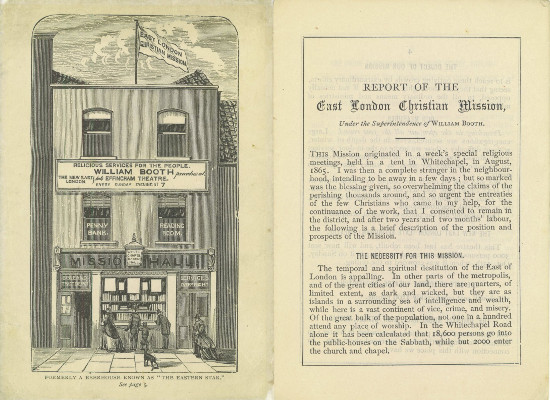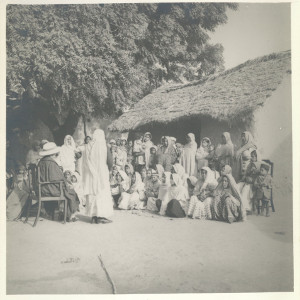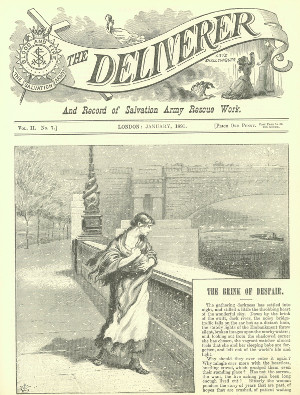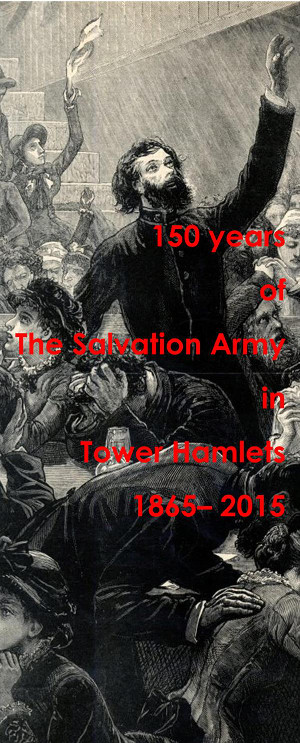If, as a researcher, you search for ‘Jane Drew’, the celebrated architect and town planner, on the Archives Hub, amongst other things, you might discover a single item, “Letter from Jane B Drew to John and Myfanwy Piper”, a letter in the “Papers of John and Myfanwy Piper”.
You can see that its a letter in a collection at the Tate Gallery Archive. The description of the collection is an example of a good quality traditional archival catalogue, giving a fairly detailed listing of the content this particular collection. But as a researcher you are really just interested in just this one letter. You may ask yourself a number of questions, possibly starting with (1) Is this the Jane Drew I’m interested in? and then (2) What is the relationship between Jane Drew and John and Myfanwy Piper? You may well be able to find answers by accessing the letter itself, but at this stage you may just want to place this connection in the broader context of Jane Drew’s life and work. As a researcher, understanding how these people are connected may shed light on your research interests.
In this blog I want to think about this question of relationships. The fact is that archivists rarely provide structured information about relationships; if there is information, it is usually in the biographical history, which might outline key events and people in someone’s life, referring to their parents, work colleagues, friends, etc. The nature of the relationship is sometimes explicitly given, but often it is not. Our standards don’t really say much about relationships between the entities (people, organisations, places, etc) that we describe in our catalogues.
Going back to the Papers of John and Myfanwy Piper as an example, the biographical history includes the following:
[John] Piper began writing reviews from the late 1920s making a name for himself as a critic writing for periodicals like ‘The Listener’ and the ‘Architectural Review’. From 1935-1937 he assisted Myfanwy Evans, with the production of a quarterly review of contemporary European abstract painting called ‘Axis’. In 1937 Piper was commissioned by his friend John Betjeman to write the ‘Shell Guide to Oxfordshire’. Piper went on to write and provide photographs for a number of the guides as well as edit the series. In the same year John Piper married the writer Myfanwy Evans.
This is a typical of a biographical history – useful historical information about the individual or organisation. Within this there is information we can potentially use to create explicit relationship information:
John Piper ‘worked with’ Myfanwy Evans
John Piper ‘was friends with’ John Betjeman
John Piper ‘worked for’ John Betjeman
John Piper ‘was married to’ Myfanwy Evans
There are a number of issues to consider here:
How can we unambiguously identify the people?
How do we choose the vocabulary we use to define the relationships?
Do we try to include dates?
Is it reasonable for us to interpret relationships as ‘friendships’ or ‘collaborations’ if this is not actually explicit?
We are looking at some of these issues through our AHRC project, Exploring British Design. They are all issues that archivists need to explore in a debate around relationship information, but the first issue to consider is simply whether we should be thinking more about including this kind of relationship information in our archival finding aids. Is it something that would be of real value to end users? This issue is coming more to the fore as we start to think about implementing ISAAR (CPF) and working with EAC-CPF , and also as Linked Open Data gains traction.
In a (well worth reading) recent article in the Journal of Contemporary Archival Studies, on the potential impact of EAC-CPF, K.M Wisser reports the findings of a survey about relationship information. The survey received 208 responses from archivists/archives in the US. Wisser wrote “The survey results indicate that the archival community has only just begun to consider relationships in the context of archival description and the role that explicit description of those relationships may play.”
As one respondent wrote:
“relationships are among the most important facets in a collection and deserve a high priority in description. One cannot understand the historical value of an event, person, or organization without knowing [the] relationship among and between them.”
One thing that really strikes me in Wisser’s findings is that archivists see relationships that are documented outside of the collection as almost as significant as those that are documented within the collection. Going back to our original topic of Jane Drew: who else did Jane Drew work with? Should we provide that information to our users, whether or not it is documented within the collection? Is our role to give as full an account as we can of Drew’s life and career? Is it to limit ourselves to what is within the collection?
Wisser’s survey asked respondents about the importance of relationship types. It is curious to me that archivists rated ‘collaborated with’ as a more important relationship than ‘studied with’; they rated a friendship as far more important when it was documented in the collection; and they rated ‘influenced by’ as generally not so important. I’m surprised that the respondents had such definite ideas about the relative importance of different types of relationships, especially when the majority appeared to agree with the importance of ‘objective cataloguing’.
In our Exploring British Design project, the work we did with researchers definitely confirmed to me the fairly self-evident observation that any relationship can be of major significance in research, even if it appears of minor significance within the archive, or indeed, within the literature in general. A brief collaboration may have been a crucial influence, a short friendship may have had hitherto unrealised impact, and anyway, the importance of the relationship depends upon the research you are doing. Researchers are not really aware of how challenging it is for us as information professionals to establish these kinds of relationships in ways that they can then access. But it is clear that this is the sort of connectivity they are after.
One of the challenges with documenting relationship types is that they can be hard to define. As Wisser notes:
“The concept of influence, however, proved the most problematic. Comments such as ‘influence is a squishy sort of relationship’ and ‘I think it would often be very difficult to prove that Entity A was influenced by Entity B’ indicate a notion of intangibility.”
The conclusion could be that we should leave well alone relationships that are hard to define. On the other hand, if we are in a position, as we research a collection, to highlight potential connections, that action could be of major value to a researcher, who may otherwise never know about a link that ends up being crucial to their particular research. The relationships that are easy to define are likely to have been defined already.
One thing that strikes me about the whole notion of introducing interpretation and opinion into cataloguing (a possible argument against defining relationships) is that the horse has pretty much bolted. I’ve looked at enough ‘objective’ descriptions to be aware that the names archivists choose to add as index terms are a choice; they inevitably have to be an opinion about the names significant enough to add as index terms. And subjects are a similar case – some collections are indexed thoroughly, some not at all.
Aside from indexing, each person would create a different scope and content entry, including and excluding different information, and whether you call that subjective or not, it is certainly always selective. You could also argue that the level of detailed hierarchical cataloguing, might indicate the relative importance of the collection. On the Archives Hub there are some collections catalogued in huge detail, and it is inevitable that researchers will assume these collections are particularly important.
All of these choices have implications for discoverability.
In Wisser’s survey, a significant proportion of respondents felt that the importance of a relationship should be based upon the use of the collection. But this, again, raises the question: When thinking about relationships, is the cataloguer reflecting the scope of the collection, or are they trying to give as full a picture as they can of the person or organisation? Are we within the world of the collection; or is the collection within the world?
The reason that I believe that we should think beyond the bounds of the collection content is that I think it promises much richer rewards for our users and encourages archives to be a major player within a broader landscape of information resources. I base my thinking on the premise that the researcher is primarily interested in their research topic, which is not likely to be an archive collection per se, but rather an event, a person, an organisation, a subject, and the way things are connected. I think archivists are still tending to think in terms of a document that describes a collection, rather than how to link the collection into the cultural heritage landscape, and even more broadly beyond that. I wonder if archivists don’t always think beyond the catalogues they currently create because the researchers they have contact with (who visit the archive) are already fairly confident they want to use that repository, or a particular archive within that repository. In other words, the researcher is already in their space. When I worked in a specialist archive, I thought about researchers discovering our archive as a whole (having an online presence) and then I thought about them using our collections (individual collections each with their own description); I didn’t think about how our collections could be seen as part of a whole information landscape.
The loudest – and most convincing – argument I hear against this kind of approach is that it takes time, and archivists are short on time. But I wonder if that means we have to think fundamentally differently. Going back to Jane Drew, and think about the value of relationships for research into her life and work…
If one archive collection description highlights just a few relationships, this could take us a long way (although relationship types are a whole different thing…). If the individuals and organisations are unambiguously identified, this can help with the process of creating links out to other data sources, so that information can be linked together; then we have the chance to benefit from finding out about relationships that have been defined elsewhere. In other words, the connections one person has throughout their life can only be fully realised through the pooling of information resources, very much a joint effort. If the data is structured it can potentially be brought together.
Traditional archival cataloguing focuses on the collection, and what is documented within the collection. It tends to think in terms of a self-contained document. Pursuing relationships breaks the bounds of any one information source. That seems like a good thing, but it raises questions around approaches to cataloguing. One obvious way to tackle this is to start to think more about archival authority records. These should enable us to move beyond a collection-centric description of the collection and towards a more entity based approach, because you describe an agent (entity) independently of any one archival collection. Another option is to think in a Linked Data way, where you are concentrating on entities and relationships.
There are so many questions raised by the whole area of entities and relationships. A few of my current conclusions are:
We should primarily be led by what benefits research. Researchers are far less likely to think in terms of individual archive collections, and far more likely to think in terms of research areas (topics). The Web gives us the opportunity to think in a broader context.
Maybe it is worth considering taking some of the time used to provide a really detailed biographical history as an unstructured narrative, or the time to provide a really detailed multi-level description, and taking more time to provide (or provide the potential for) connections between our descriptions and the larger information environment. This could allow researchers to bring together much more comprehensive information, even if what we provide about individual collections is less detailed. Just adding something like a VIAF identifier to a name would be a great big leap forwards (http://viaf.org/viaf/51792789).
There is great value in being a small fish in a big pond, because most researchers are fishing for data in the big pond. As Wisser’s article says, “relationships are…seen to free collections from the isolation of individual repositories.” If we aim to be part of the big pond, we can continue to tend our smaller ponds as well!
To go back to the Piper Collection and Jane Drew….I used this as a random example, thinking of a researcher interested in one particular designer. But of course, the Tate Gallery Archive can’t be expected to define all the relationships within the description. It’s great that they have provided enough detail to find this one individual item – without that, we would not know about the connection with Jane Drew. I’m arguing for unambiguously identifying entities (people, organisations) because if we can potentially link this instance of ‘Jane Drew’ to other instances in other information sources, then it is very possible that we can find out more about this relationship; And if the relationship can’t be established through other sources, then maybe this archive provides unique evidence of a connection that could significantly benefit research.





